Oria, weeping river (and II)
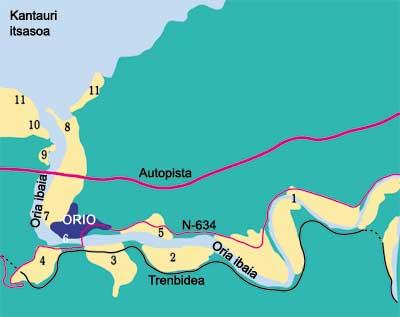
Marshes, straights and ribs of moto.3.
Port area.4.
Bank of marshes in the area of Oribar.5.
Aliseda y marisma.6.
Municipality of Orio, portua.7.
Pipes, fillings and vocal.8.
Beaches and dunes.
Orbaiza.10. Vocal
flysch 11.
Cliffs, slopes and panoramic views.
Municipality of Orio, port
This last area, specifically the exterior, we would start by mentioning the town of Orio.
The documents indicate that the municipality of Orio was born in 1379. Although they initially moved around the economy that offered iron, trade acquired great importance. We must think that the Oria River was an essential place to pass from one side to the other. On the other hand, the people were much smaller than we see today, and today their initial appearance, structured and prepared for defense. Since then, it extended on a slope to the river, settling on marshes and banks, mainly due to the development of the fishing industry.
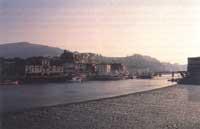
Tourism has given the last impulse, in which buildings of irregular nature have been built on the beaches and dunes. Our civilized society, which wants to bet on ecology, would end the path already undertaken and also have at its disposal opportunities and facilities to achieve it...
Canalizations, fillings and banks of the...
The mouth of the river has witnessed a great marsh and riverbank that extend by the sea and by it. In order to gain ground for this system, the river was channeled, often making large landfills to lift the ground. In addition, the streams that ran towards the river, without even considering a minimum order, were channeled differently, altering the landscape.
With this we don't mean (hopefully!) You have to leave it there, but if you have to take into account all the points of view (and not a few) to do things. Then someone thought that going through the mouth to the highway would be a good idea, and there are the consequences of this work.
Beaches and dunes
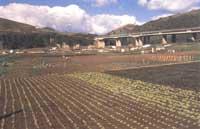
Currently, Orio beach has been completely restricted and the remaining areas indicate that in its day it was a system with high ecological potential, since given the existing situation, there is an interesting number of vegetation species typical of these systems. Highlights: Cakile maritima subsp maritima, Galium arenarium, Carex arenaria, Eryngium miritimum, Euphorbia paralias, Lagurus ovatus, Ononis repens var. maritima, Thymus polytrichus subsp. arcticuys, calystegia soldanella, Honkenya peploides,...
And many other species (perhaps more than 50%) have been lost since the beginning of this century. Currently, the beach dune system is practically destroyed, but the conservation of the remaining dune parts and the correct management of the entire area in general would be beneficial, at least, with garden appearance and not any type of partxeo. On the other hand, the organization that corresponds to take care of, take advantage of (and why not) tourism should take it into account.
Beach of Oribarzar
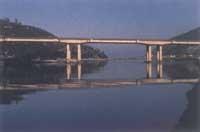
In front of the mouth of the river Oria is to the left this beautiful beach. However, the tracks and rear constructions towards the side of the dikes and the bar have blinded this corner. However, given the limited volume of the aforementioned buildings, the landscape value of the area is still considered. The various hamlets, meadows and cork oaks located on which the zagueros sit on the back give this area a special candy, being a place to preserve.
Vocal flysch
At the mouth of the river you can see the coastal flysch in the left and right areas. In this area appears the flysch of the Eoceno-paleozene, which appears on the Guipuzcoa coast, with presence of sandstones and limestones painted mainly. In this area we will see different geological phenomena: folds, different processes of movement, fossils, ...
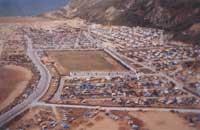
Undoubtedly, the geological aspect is very important and another complement of this area. All these complements are precisely those that confer a global configuration to the Oria River and we consider that from this perspective should be raised protection criteria.
Cliffs, slopes and panoramic views
The cliff and the slope of the sea, located to the left and right of the mouth of the river, offer us a magnificent panoramic and are ideal places for watching seabirds. Its vegetation is especially limited to the cliffs (Plantago maritima, Crithmum maritimum, Asplenium marinum, ..). Climbing the cliffs, we find other elements. In the eroded and fissured strata of sandstone of the Flysch, the Vandenboschia speciosa, rare and rare garo, birch, marojo, willow and holly, on the spiny mattress of the otea, offer us their nuances. We cannot forget Lilium pyreinaicum and Iris latifolia as special as slender. adapted to both mountain peaks and sea slopes. Do not forget the typical silicícola Erythronium dens-canis and the scarce (especially in the height we have found).
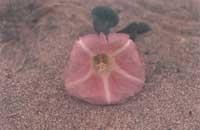
The route between the river Oria and the mouth of the river Iñurritza is unique, of great scenic value, with a very interesting richness as mentioned above.
In late winter and early spring we will see beautiful yellow flowers. They are lilipas and, opening them everywhere, will make our journey good. The species present are two: Narcissus pseudonarcissus supsb. pallidiflorus and Narcissus bulbocodium subsp. citrinus .

Starting from the beach of Oribarzar and taking the road that leads to Zarautz, we can contemplate some beautiful cork oaks on the slopes of the right. Specifically, in the article dedicated to this tree (see Elhuyar. Science and Technology no. 22. The reader can consult its characteristics and the particularities of its surroundings in April 1989.
As for the demersal fauna and as in other areas, we will approach Zone 3, which is the one that appears at the mouth of the river.
As a culmination of this section and as a summary, we would like to take a look at the following graphs.
Related information

In conclusion we can say that: The typical community that appears in the estuary of the Oria River, although with a small number of species, shows that the number of individuals is high, being easily colonizable the central and interior areas of the river.
In the outdoor area, the number of diversifications increases compared to the other two zones and tend to decrease progressively away from the mouth.
Conclusions
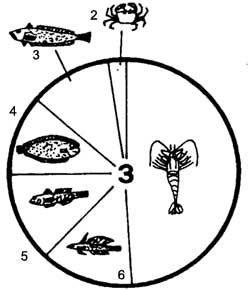
The reader may wonder: “What will happen to the Oria River and the surrounding ecosystems?” “What is the attitude of the different administrations?”, “What do biologists, naturalists and scientific-ecologist groups say?”... For our part, we will try to explain some clarifications and proposals that, in short, will have to have a lot of weight.
In the first place and as a reference, especially in the last decade, the different administrations in the Basque Country have listed the areas of natural interest, which seems to want to protect, although rarely has the intention materialized. Subsequently, as for the area, some of the areas mentioned in these articles are collected. In the last legislature the Department of Environment, the “Motondo” area, in the “Map of Botanical Interest – Landscape of the CAPV”, showed that it is not surprising that on other occasions they will be carried out, with clear contradictions between the different administrations.
However, we believe that, as is real and logical, it should appear and we want these articles to highlight that perspective. This area should be considered within a globality, eliminating the “mini-minimalists”. In this way we would avoid the realization of partxos and we would approach well the problem from which we must address it. But we go to the essence.
Below are the criteria that the Provincial Council of Gipuzkoa used in 1989 in the “Study of the spaces of natural interest of Guipuzcoa” for the protection of the different natural spaces, which are debatable. See “Elhuyar. Science and Technology” Vol. 29):
- Have a representative sample of the original ecosystems.
- Degree of conservation of vegetation and fauna.
- Valuable, routine or endangered geological formations.
- Great landscape interest.
- Be in danger.
- Didactic interest.

Based on these criteria, we will try to demonstrate that it should be a place of total protection.
- This is an indicator of the ecosystems that existed in the riverbeds and mouths of the rivers in the Basque Country, one of the last remaining at present and that is considered opportune to recover.
- In these articles it has been shown that the degree of vegetation conservation at some points is quite good, with some of the quotes being one of the last. On the other hand, it is not considered that too many investigations have been carried out from the point of view of the fauna in general and the actions carried out are very representative of the ecological potential of this area.
- It is also noteworthy its geomorphological importance, with different systems. The river, estuarine and coastal systems of the Oria River are very interesting and important with their units. Meanders, beaches, marshes, sea cliffs, geological structures, diverse erosive processes, fossils, ...
- We consider that the landscape importance of this aspect is demonstrated in these articles. So far, unfortunately, we have not taken its advantage at all to this criterion, and we have tried to fragment and eliminate the beautiful landscapes we have on many occasions, with obvious consequences. We should pay special attention to the evolution and manipulation of landscape as a basic element of quality of life and progress.
- In this last stretch of the Oria River we would wonder what is not in danger (not of course the highway bridge). This area has suffered all kinds of aggressions (driven by different administrations) and in general it is another typical example of our beautiful environment. We already have too many. When will they notice?
 Birch in prayer.
Birch in prayer. - Didactic interest. Since the systems currently existing in this area are in many cases very dynamic, these ecosystems will allow us to analyze them “in situ”. But approaching pedagogy, we want to emphasize what the Basic Curriculum Design for the E.K.A., Knowledge of the Environment (Primary Education) says (O.C.D. these may undergo some change, as they are in the process of presentation, dissemination and debate throughout the school community).
Regarding environmental knowledge, among others, the competences that students must develop during Primary Education are the following:
- Analyze the manifestations that we can observe in the environment and that are a consequence of human participation, from an attitude that promotes the defense and recovery of the ecological balance and the conservation of the cultural heritage and from an attitude consistent with the assessment made in daily activities.
- Understand the environment as a system, whose physical, natural, social, cultural elements... different can produce alterations interacting with time, generating environmental problems, being necessary a critical analysis of them and seek constructive solutions.
- Use knowledge about the natural environment in its physical and living elements, as well as propose, value and, if applicable, participate in conservation and improvement initiatives.
- Recognize and value the contributions of science to improve the living conditions of human beings, appreciating the importance of scientific training and using in daily activities the values and attitudes of scientific thought, showing a critical and informed attitude to the great problems posed by the relations between Science and Society today.
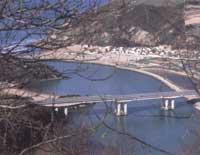
Due to the great didactic interest of the area, it will be interesting to work on it some of the blocks that will be taught in our schools and, in addition, if the points of reference of these blocks are general objectives (that is, concepts and procedures of the contents to be developed by the students), it seems very interesting to emphasize “values, attitudes and norms” about the environment.
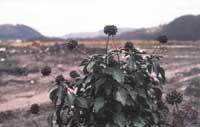
Human intervention in the environment and the consequences of its use and enjoyment have generated serious problems. However, being a daily activity, it makes it difficult to become aware of these consequences. The education of conservationist values must be constant, always combining the social and individual implications of our behavior. The aim of this Department is to present values that guide this human intervention in the environment.
- Human activities affect the environment:– Getting used to the analysis of the facts before pronouncing on them.– Rejecting those that critically value, degrade or cancel human activities that affect the environment.– Trying to know the Basque Country (and especially the
environment of its people). To know, in turn, the importance it has had in the different areas of life: history, economy in culture.– To know that
natural and energy resources are limited, becoming aware of their consequences and acting with conservationist criteria. - The environment influences the quality of life. Measures must be taken to preserve this and the types of animals and plants in danger of extinction:– To be interested in and critically evaluate existing measures for the protection of the environment.– To
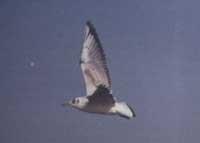 We leave you the flight of the Reidora Gull, hoping that soon...
We leave you the flight of the Reidora Gull, hoping that soon...
be concerned with the different approaches of the environmental and naturalistic groups of the Country or the Basque Country, critically valuing their actions.– To pay attention to the most serious environmental problems of today and to carry them out in the nearest environment (schools, etc.
). - It is necessary to know and be alert about the risks arising from development and the inevitable and irreversible changes that occur in the natural environment:– To worry
about the changes produced in the relief and the ecosystems and their consequences.– To consider some
natural phenomena as essential, valuing the measures taken on the importance of prevention and on them.
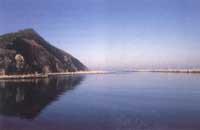
Following the spirit of reform, and as we have been able to verify when analyzing the environment, if we have to try to work values, attitudes, norms, etc., we also have to evaluate these, which presents us with a very important pedagogical “challenge”. However, these Designs have been extended to all centers and each center can also make their adaptations and contributions adapted to your situation. Therefore, educators have work. But why not send these Curricular Designs to the different Departments of Environment of the different administrations and to the mayors of the municipalities?. Local municipalities should promote the development of a curriculum design that is approved by their schools. Is it not?
On the other hand, constant economic-political opinions or demagogy condition the conservation of natural space through poor, inadequate and false arguments. How long?






